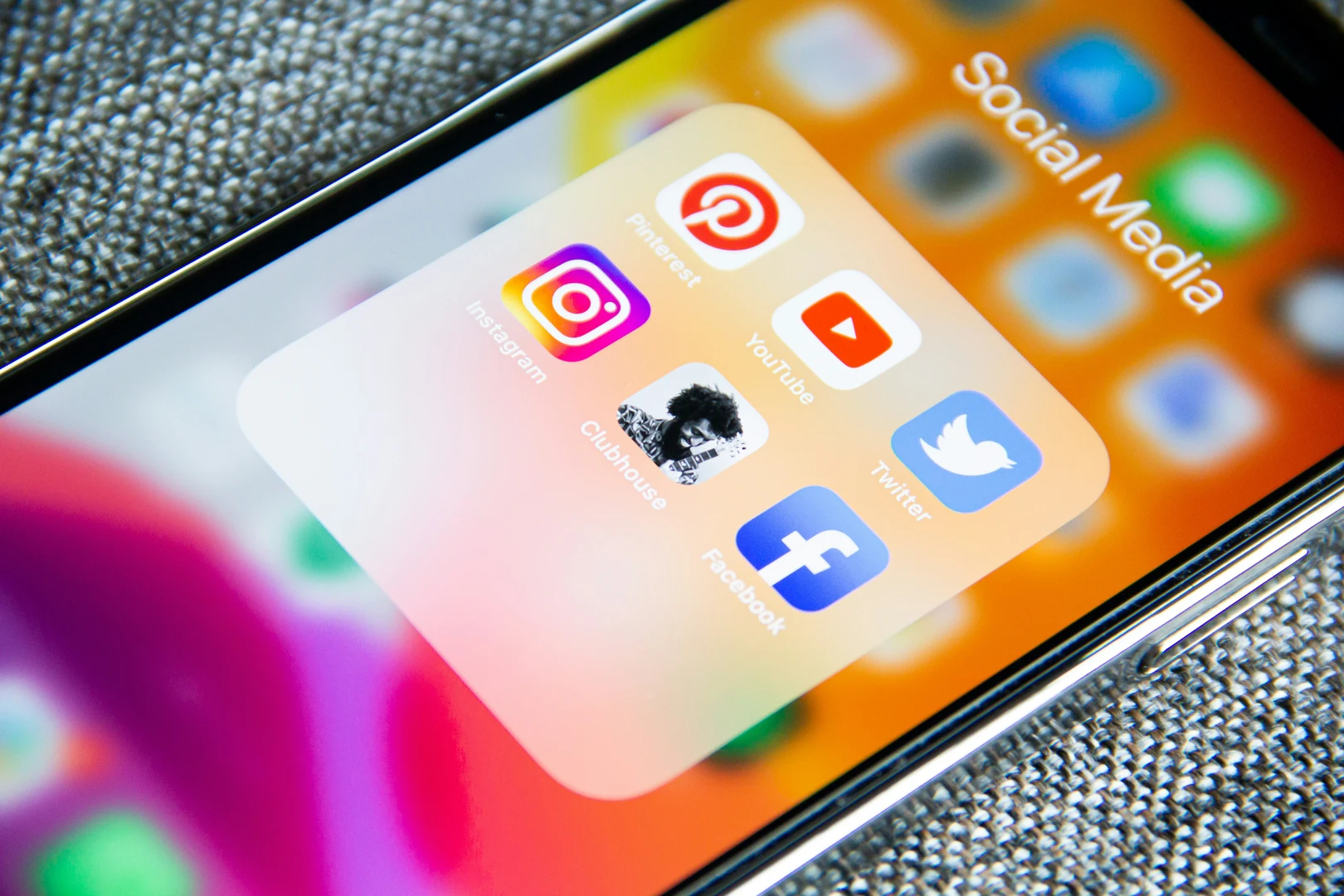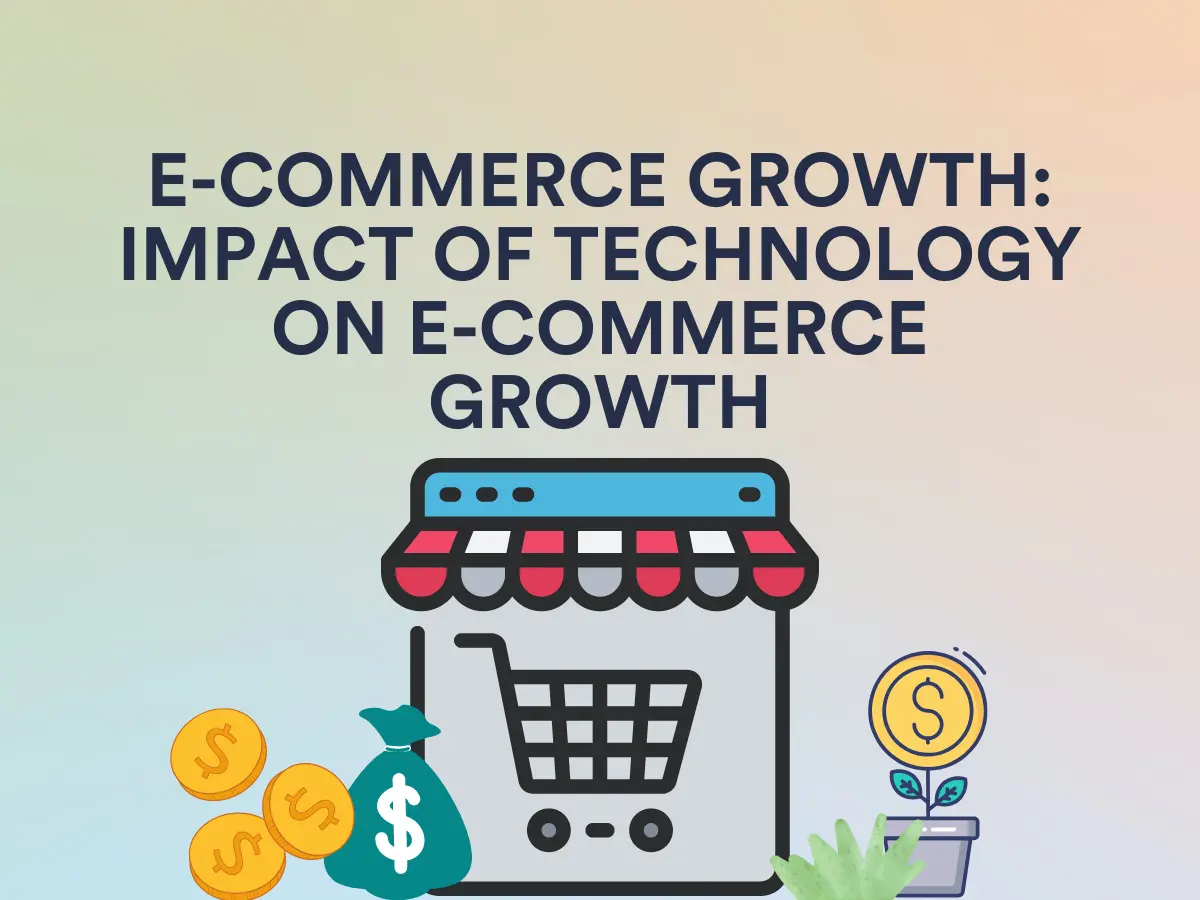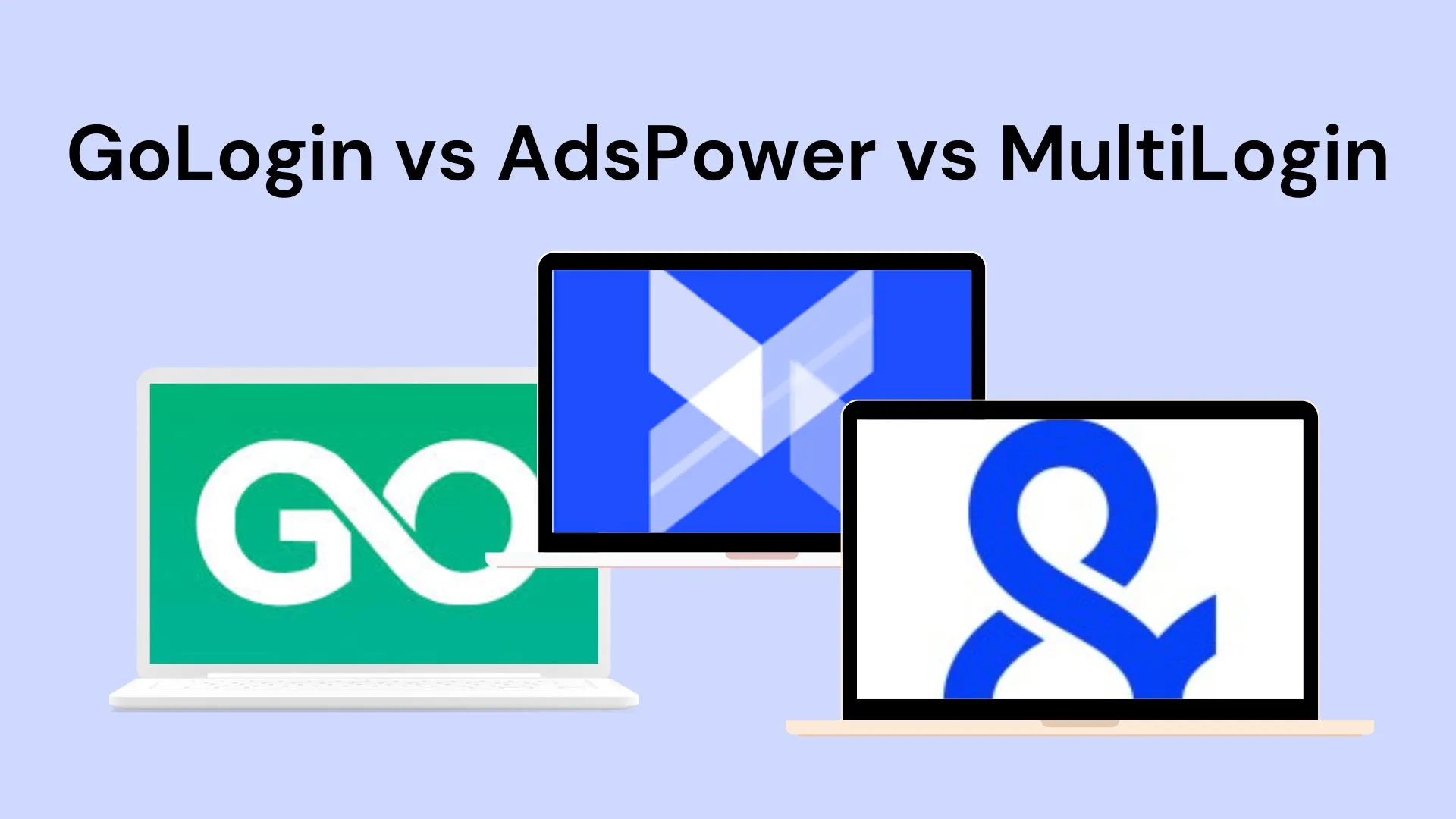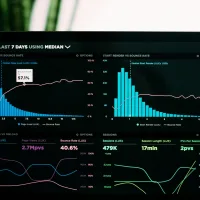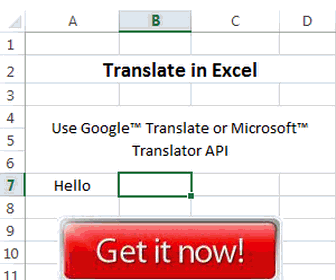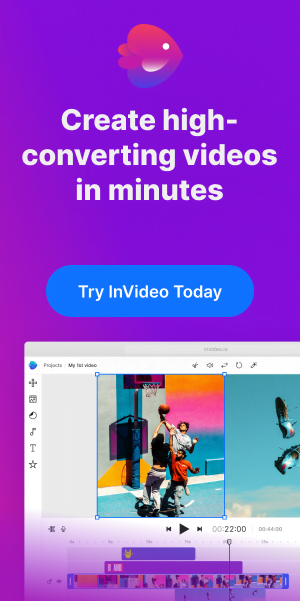Did you know that developing a mobile app is a profitable venture? Starting a mobile app development business is definitely the best decision anyone can make. A research shows that from 2019 to 2020, the number of apps individuals download daily is about 250 million.
This just shows how much mobile apps have become common among individuals. With this, you can foster effective interaction with customers by developing an app. This will bring more visibility to your app development business.
Developing a mobile app isn’t an easy forte. You’ll need a certain amount of money to start a successful app development business. You will also need to have a good business plan, marketing strategy, and a mobile app idea. This article covers everything you need to know about starting a mobile app development business. Including the different processes to follow to successfully launch your app development business.
What Is a Mobile App Development Business?
A mobile app development business involves developing apps that work on different mobile devices and PCs. These apps can be simple, mid-level, or complex.
A mobile app business offers various services, some of which include app design, app concept creation, and app development.
Why Build A Mobile App?
According to MobiLoud, 88% of our time on mobile phones is spent using mobile apps. This shows that businesses can interact directly with their audience through mobile apps.
Below are some reasons why building a mobile app is important:
1. Gives Your Business A Competitive Edge
A research done by PR Newswire shows that only 48% of small businesses make use of mobile apps to interact with their customers. This means that the app development business industry isn’t yet saturated with various apps.
This is your chance to stay ahead of your competitors. So, just go ahead and develop that mobile app! If there are various apps available in your niche, you can add more helpful features to yours. Doing this will help you stay ahead of your competitors.
2. Gives Customers Better Value
Owning a business isn’t only for the sole purpose of making money. As a business owner, your customers must see reasons why they should keep patronizing your business. You’ll need to constantly think of strategies to keep them coming.
One of the ways you can provide value to your customers is by offering good customer service. LoyaltyLion records that 86% of customers are willing to constantly patronize a brand with whom they’ve built an emotional connection with their customer service agent.
This can work for your business; all your customer service needs to do is be an active listener, always checking that your customers are satisfied with your product or service and responding promptly.
This might sound like a lot of work to do but this is what companies like Apple, and Amazon do to retain their customers and stay ahead of other competitors.
3. Increases Business Profit
Having a mobile app for your business is one way to boost profit. You can only achieve this if your customers are satisfied with your product or service. Now, the question is, how exactly can having a mobile app increase your profit?
Let’s look at an example. You’re an e-commerce business owner and you sell electronic devices like smartphones, phone accessories, laptops, keyboards, and so on. Luckily for you, you were able to lay hold on the recent Apple product that people have been waiting to own.
Having this product when your competitors don’t is a plus for your business. This means you’ll be making some good profit from the sales. However, if all you have is a website where people can make purchases, then this might be a problem.
This is because your website tends to experience technical difficulties when there are too many orders coming in. To avoid this, you can build a mobile app for your business, where customers can also place orders alongside your website.
According to Tidio, 60% of smartphone users prefer shopping from a mobile app rather than a website. This is because of a better user experience. On the other hand, 88% have one or more shopping apps on their smartphone.
4. Build A Stronger Brand
Developing a mobile app is one of the ways customers can communicate easily with your business. This can help build trust among your target audience. Once trust is built, your audience will be willing to commit to your brand and even refer people.
How To Start A Mobile App Development Business
Before you start a mobile app development business, there are various steps to take. Some of these steps include:
1. Choose A Mobile App Development Business Idea
Before starting a mobile app development business, you’ll need to choose your app idea. Ensure that your customers need your app idea.
Additionally, you’ll need to answer questions like:
- Is there a clear problem or need that your app addresses?
- Does your app offer a unique solution or improve upon existing solutions?
- What is your mobile app’s unique selling point?
- Is the problem or need large enough to support a viable business?
- Are there any existing apps that offer similar solutions?
- Is there a large enough market for your app to succeed?
Write out your answers and if they make sense to you, then you can move on to the next step. If not, you can go back to your drawing board and think up another mobile app business idea.
Profitable Mobile App Business Ideas You Can Try
If you don’t have any business idea in mind, you can pick from the options below:
- Personal fitness coach app
- Mindfulness and meditation app
- Nutrition tracker app
- Sleep tracker app
- Health data management app
- Interactive language learning app
- Skill development platform
- Educational game app
- Virtual classroom app
- AR/VR educational app
- Time management app
- Habit tracker app
- Finance management app
- Project management app
- Personalization app
- Hyperlocal events app
- Community-based social app
3. Conduct A Market Research
Now, you’ll have to ensure that the mobile app you’re about to develop isn’t similar to anyone already on the market. However, if there is, it’s time for some competition.
Before you go ahead to develop your app, you’ll need to find out if the existing app already solves the problem you have in mind. If it doesn’t, then you’re good to go. Also, you’ll need to find out the features available in the existing app.
This is because it will help you know the improvements you can make while developing yours. Additionally, you can easily know the problems in an existing app or your audience’s pain points by going through app ratings and reviews.
2. Validate Your Mobile App Development Business Idea
Once you’re done with your market research, you’ll need to validate your mobile app development business idea. From your market research, you should have an idea if people are even looking for your app in the first place
For more information, you can conduct simple keyword research. eCommerce marketing tools like Google Trends can help you find what people are looking for. Another way to validate your idea is to just go ahead and build your MVP (minimum viable product).
Since it’s just a prototype, you can use a simple no-code app development tool like Bubble to make your MVP. Once you have a valid idea, you can move to creating your wireframe.
Creating a wireframe for your mobile app can be as simple as jotting down the flow map on a piece of paper. To make things easier, you can use prototyping tools such as JustInMind or Figma.
Remember to be as detailed as possible. Write down how a user will navigate on your app, from the moment they log in to when they sign out. You must jot down the flow of each functionality of your app as well.
Now that you have everything out on pen and paper, it’s time to remove the non-essentials. Stick to the main benefit of your mobile app idea. Only include the must-haves in the first version, and save the extra features for later updates.
This will help you minimize the cost of building your mobile app.
4. Write A Mobile Development Business Plan
This is a very important step when it comes to starting a mobile app development business, especially if you plan to pitch your mobile app idea to investors. A business plan will serve as a roadmap for your business.
Most business owners find it difficult to write a business plan for their ventures. To be honest, it’s not easy creating one. You can use business plan writing tools to make it easier for you or just simply outsource it to a tech freelancer.
Creating your business plan is like drawing a map for your mobile app journey. It helps you see where you’re going and how to get there. Make sure it is as detailed as possible.
Here’s what you should include in your mobile app development business plan:
- Executive Summary
- Business Description
- Market Analysis
- Organization and Management
- Product or Service Description
- Marketing and Sales Strategy
- Funding Requirements
- Financial Projections
- Risk Analysis
- Implementation Timeline
- Monitoring and Evaluation
- Appendix
5. Register Your Mobile App Development Business
You’re finally one step closer to becoming a mobile app business owner. Right now, all you have to do is register your business with the relevant authorities.
Doing this will make it easier to open a bank account, secure loans, and even build brand credibility. Do well to choose the legal structure of your mobile app development business and also get all your business licenses.
You may also need to get additional licenses depending on your vertical. For instance, if you develop a contactless payment app in Nigeria, you will need to keep several fintech regulations and policies in mind.
6. Build Your Team
Starting a mobile app development business can never be done alone. You’ll need a great team to make your business successful. However, putting together a big team at the early stage of your business might be difficult if you don’t have a steady flow of income.
To make things easier for you, you can start with the essentials. If you don’t have the technical skills required for your mobile app business, then you need to get a technical partner.
Most new business owners offer their technical partners equity or the co-founder position in return for their technical expertise. You can also reach out to someone you know, like a friend or family member.
However, make sure you sign all the relevant documentation about remunerations. Another essential team member you’ll need is a product marketing partner.
A product marketing partner will help develop the branding, marketing strategy, and positioning for your mobile app. A well-versed product marketing partner can significantly impact the success of your app by effectively reaching and engaging your target audience.
As your business grows, you can expand your team to include roles such as developers, designers, project managers, and customer support. When doing this, it’s essential to find individuals who align with your business goals and bring complementary skills to the table.
Talents To Hire When Building Your Mobile App Development Team
- Developers: Responsible for coding and programming the app.
- Graphics Designers: Create visually appealing and user-friendly interfaces.
- Project Managers: Oversee the development process, ensuring timely completion.
- Product Marketing Specialist: Develop strategies to promote and position the app in the market.
- Social Media Manager: Manages social media channels to increase app visibility.
- Content Creator: Generates engaging content to attract and retain users.
- Operations Manager: Handles day-to-day business operations.
- Customer Support: Provides assistance to users and addresses queries or concerns.
- Sales Representative: Focuses on acquiring new users and partnerships.
- Partnerships Manager: Develops and manages strategic partnerships.
Remember, each team member plays a vital role in the overall success of your mobile app business. Always look for individuals who share your passion and vision, and foster a collaborative and innovative work environment.
7. Develop Your Product
Now that you have your team, it’s time to develop your product. This stage is where your vision starts to take shape, and collaboration becomes crucial.
Start with detailed planning sessions. It is important that you sit down with your technical team and product marketing partner to sketch out a roadmap.
Defining your milestones and setting realistic timelines is a good idea for your business. Once this is done, you can move on to the fun part – prototyping (if you haven’t done this already).
Work closely with your designers and developers to create a visual prototype or wireframe of your app. Think of it as a rough sketch that gives you an early look at how your app will function and what it will look like.
The development process is often best tackled in smaller, manageable steps. It is best to adopt an iterative approach, breaking down the project into sprints. Don’t forget to review progress, tackle challenges, and fine-tune your app’s features and user experience.
Now that you have an idea of how to start your mobile app development business. You’ll have to find out how much it will cost to bring your mobile app idea to life.
How Much Does It Cost To Build An App?
After you’ve decided on your mobile app idea, it’s time to find out how much it will cost to develop it. In this section, we’ll just provide you with an estimated cost for building an app.
Cost Breakdown Based On App Type
The development cost for each app type was obtained from an app development calculator and clutch.
| App Type | Estimated Cost | Estimated App Development Time |
| Educational App | $25,000-$250,000 | 3-6 months |
| Gaming App | $10,000-$600,000 | 2 months year or more |
| Travel App | $25,000-$300,000 | 3-8 months |
| Health and Fitness App | $50,000-$250,000 | 4-6 months |
| Social Media App | $50,000-$500,000 | 6-12 months |
| E-commerce App | $30,000-$500,000 | 4-12 months |
| Productivity App | $25,000-$250,000 | 3-6 months |
| On-Demand App | $50,000-$300,000 | 4-8 months |
| Augmented Reality App | $100,000-$250,000 | 1,600 hours |
| Dating App | $50,000-$350,000 | 1,400 hours |
| Food Delivery App | $40,000-$150,000 | 900 hours |
| Language App(Duolingo) | $60,000–$225,000 | 900 hours |
| Taxi App | $50,000-$400,000 | 1,600 hours |
Cost Breakdown Based On OS Platforms
| Operating System Platforms | Estimated Cost |
| iOS Platform | $75,000-$500,000 |
| Android Platform | $50,000-$500,000 |
| Cross-Platform | $40,000-$300,000+ |
Cost Breakdown Based On Regional Differences
The various hourly costs were obtained from Quibit-labs.
| Region | Hourly Cost |
| Central Asia | $10-$59 |
| East and South Asia | $10-$350 |
| Western Europe | $150-$400 |
| Eastern Europe | $25-$199 |
| North America | $100-$400 |
Cost Breakdown Based On Complexity Level
| Complexity Level | Estimated App Development Cost | Estimated App Development Cost |
| Simple App | $5,000-$50,000 | 2-3 months |
| Mid-level App | $50,000-$100,000 | 3-9 months |
| Complex | $120,000-$300,000 | 10+ months |
Cost Breakdown Based On App Features
| App Features | Estimated App Development Cost | Estimated App Development Time(hr) |
| Calls | $14,000-$15,000 | 300-400 |
| Login | $500-$1000 | 30-42 |
| Payments | $25,000-$3,000 | 60-78 |
| Messaging | $3,000-$5,000 | 170-180 |
| Push Notifications | $1,000-$1,200 | 25-32 |
| Profile Completion | $9,00-$1,000 | 30-40 |
| Maps | $3,000-$4,000 | 100-120 |
| User Management | $3,500-$4,000 | 66-90 |
Cost Breakdown Based On App Design
| App Design Process | Estimated Cost | Estimated Development Time |
| UX Design | $2000-$8000 | Simple app: 10-14 hoursMid-level: 50- 60 hoursComplex: 150+ hours |
| UI Design | $10,000-$40,000 | Simple app: 14-20 hoursMid-level: 80- 90 hoursComplex: 100+ hours |
| App Design Research | $100-$350 | Depends on your niche |
| Animation | $1000-$20,000 | Depends on the animation level |
| Branding | $2,500-$10,000 | Depends on your logo, icon choice |
Cost Breakdown Based On Development Team
| Factors And Requirements | Simple App | Mid-level App | Complex App |
| Development Time | 2-6 months | 6-9 months | 9-15 months |
| DevOps | $2,000-$4,000 | $5,000-$7,000 | $10,000+ |
| Quality Assurance Specialist | $8,000-$10,000 | $15,000-$20,000 | $20,000 |
| Project Manager | $5,000-$7,000 | $10,000-$15,000 | $10,000 |
| Solution Architect | $1,000-$3,000 | $5,000-$8,000 | $9,000+ |
| Developers | $30,000-40,000 | $50,000-60,000 | $100,000+ |
| UI/UX Designer | $4,000-5,000 | $5,000-7,000 | $10,000-15,000 |
| Business Analyst | $2,000-3,000 | $5,000-8,000 | $8,000-10,000 |
Having known the estimated cost of developing an app for your mobile app business, you can now proceed to seek funds from investors. But this is only possible if you have a business plan.
How To Get Funding For Your Mobile App
As earlier stated, when starting a mobile app development business, having a business plan is important. With a business plan, you can receive funds for your business and also share your idea with your team.
When writing a business plan, various sections aren’t to be omitted. Every single section in your business plan is equally important.
Without further ado, let’s find out what each section contains:
1. An Executive Summary
This is an opportunity for you to get investors or stakeholders hooked on your business idea. All you have to do is make your executive summary engaging while capturing the details of your mobile app business idea.
Doing this will make it easy for your app development business to get funded by receiving investors. Your executive summary should answer questions like:
- Who is my product for?
- What problems are my audience facing with a product similar to mine?
- What are the needs and demands of my audience?
- What solutions do I have for these problems, and how will I meet my audience’s needs
- What do I aim to achieve with my product?
- What makes my product different from the existing ones?
- What is my domain name?
Once you have the answer to all these questions, your executive summary is ready. Also, you wouldn’t want to overwhelm whoever is reading your summary with too much information. So, keep your summary clear and brief. It should be at least 2-3 pages.
2. An Overview of Your Business
After your executive summary, providing your reader with a detailed overview of your business is an important part of your mobile app development business plan.
This section will help your readers know more about your business. Make sure to provide the following details:
- Your business’s name and location
- Your app’s name and type, e.g., social media app, e-commerce app, video editing app, etc
- Your business’s mission: You’ll have to provide the intent of your business. Why exactly does your business exist?
- Your business vision
- Type of entity: privately owned, partnership, or LLC(limited liability company)
- Team size: You’ll have to mention how many workers you have, then provide information related to them based on hierarchy. This information will include the level of expertise, experience, and achievement
- Your advisory panel: This includes developers of some apps and those with experience in app development
3. Product Description
This is where you provide full details of your product. Remember, you need to convince investors and stakeholders to work with you or fund your business.
One way you can do this is by identifying a problem and providing a solution. So, when informing your reader about the problems your app will solve, you’ll have to answer these questions:
- Who faces these problems?
- How does it affect people?
- Why does solving the problem matter?
When answering these questions, you can research some underlying issues people are facing. For example, 25% of millennials find it hard to decide on the meal to eat. Some even spend 132 hours a year to make a decision.
This is already a problem among millennials and due to indecisiveness, their health is being affected. So, to help curb this issue, I came up with an app idea. The app will help provide daily suggestions on healthy meals that can be taken for breakfast, lunch, and dinner.
Developing an app like this will reduce the time they spend on making food choices. For this section, we advise that you avoid too much technical information. Just make your app idea clear and do well to include your app features.
4. Detailed Industry Analysis
For this section, you’ll have to provide detailed information on the mobile app industry. Conducting an analysis will help you know your competitors, the likelihood of your app succeeding in the market, and the market trends to follow.
Below is an explanation of what should be included in this section:
- Market Size
This section will include the possibility of your app succeeding despite having competitors. You’ll have to include the number of people you can target per year in the market. You’ll also include if your app is currently in demand in the market.
Like the app idea we talked about earlier, you’ll have to find out if people really need a solution for indecisiveness. If yes, how many percent of these millennials will love to download the app?
- Market Trends
You’ll need to have an idea of the mobile industry’s past, present, and future predictions. Doing this will help you explain to your reader how well you think your app will do in the market, both long-term and short-term.
- Competitors Analysis
This step is done by every business on the market, irrespective of its size, type, or industry. You’ll need to know your competitors, their capabilities, history, and weaknesses. You can study their weaknesses and turn them into a strength for your business.
- SWOT Analysis
This is an analysis that helps you know your business strengths, weaknesses, opportunities, and threats. A SWOT analysis will help you make informed decisions on how to make your business succeed.
SWOT Definition
Strength: This part will include your business attributes that will give it an advantage over other mobile app businesses.
Weakness: Your business having a weakness is totally normal. Every business you can think of has its various weaknesses. So, for this section, you’ll have to write the attributes of your business that can give your competitors an edge over your business.
Find out what your business is lacking, the things to improve on, and what your customers aren’t satisfied with. Doing this will help you find possible solutions and will help reduce the risk your business will face.
Opportunities: This will include external factors that your business can make use of to its advantage. These opportunities include a growing demand for your app, a new niche, locations with fewer competitors, and social trends that can benefit your business.
Threat: This includes external factors that can affect the success of your business and are usually out of your control. Having a backup plan will help to avoid possible threats, although there isn’t a 100% assurance that the threat will be avoided.
5. Marketing Strategy
In this section, you’ll highlight the different ways you plan to market your app to users. You must choose the right strategies, as this will act as a deal-sealer between your business and potential investors.
Below are some things you can include in your market strategy:
- Target Audience
This is a very important aspect when deciding the marketing strategy you wish to use. You’ll have to choose your target audience, which should include their age, gender, location, marital status, or occupation.
You can also gather their psychographic data. This will include their most used sites and apps, hobbies, attitude towards money(are they sensitive to price or do they always go for valuable products), professional and personal goals, tech-savviness, etc.
- Landing Page
A landing page will provide your users with all the information they need to know about your app. It will also keep them informed of updates and features. With a landing page, you can reach a larger audience.
- Product Growth
This is a strategy you can use to increase your audience and grow your brand. You can build a referral program in your app that will help your users share your app with their friends. You can attach a bonus to each referral.
- Customer Acquisition Strategy
After you’ve identified your target audience, you’ll have to devise a strategy to attract them to your app. This will require you to determine your customer acquisition cost, i.e., how much you’ll have to spend on attracting customers to your business.
Doing this will give you an idea of the right marketing strategies to employ. Here are some marketing channels you can use to monetize your mobile app.
Different Marketing Channels For Monetization
- App store optimization
This involves making your app visible on an app store like the Google Play Store or Apple App Store.
This app store optimization process requires that you have a proper idea of your target audience. It will include the keywords your audience will use to find apps similar to yours.
- Content marketing
Content marketing is a marketing strategy that’s used to attract, retain, and engage customers. It involves the creation and sharing of relevant content like social media posts, podcasts, emails, videos, and articles.
- Influencer marketing
You can work with individuals who have a large social media fan base to help you showcase your app to your audience. Additionally, when choosing an influencer for your app, make sure that you consider the individual with whom your target audience is familiar and loves.
Doing this will increase the chances of your app being downloaded by your audience and allow your app to reach a larger audience.
- Email marketing
Email marketing involves the sending of informational emails that can inform your audience of new updates, features, and promos on your mobile app.
- Paid advertising
This marketing strategy involves placing ads on platforms like Google, Facebook, YouTube, or TikTok. With paid ads, you can share your product with your targeted audience or a larger audience.
- Search engine optimization
You can make use of an SEO strategy to create content for your app on social media or websites.
6. Financial Plan
This is where your investors would want to see you explain how you’ll make money from your app and the amount you’ll need to run your business.
- Monetization Strategy
A monetization strategy is aimed at generating revenue from your mobile app. In this section, you’ll need to discuss how much you’ll need to monetize your app.
- Start-Up Costs/Funding
According to statistics, 47% of startups fail due to a lack of investors and finances. So, to avoid this for your business, you’ll have to provide details of how much you’ll need to start your business.
In this section, you’ll need to include inventory, rent, employee salary, one-time costs, and so on.
- Exit Strategy
If you plan to sell your business app idea in the future, you’ll need to have an exit strategy. There are various exit strategies including initial public offering, acquisition, and management buyout.
Having this will help you gain attention from angel investors. Additionally, before pitching, you’ll need to understand these terms. Angel investors are likely to trust entrepreneurs who have an idea of how much you’ll need for your business.
7. Operational Strategy
In this section, you’ll have to cover how you’ll maintain quality assurance and handle customer services. Other things you can cover in this section include:
- Users Process
You’ll need to provide information on how your audience will behave when they hear about your app for the first time and when they start using it.
- Personnel Plan
This section will include how you’ll pay your employees, how you’ll hire your employees, how you’ll set your organization’s hierarchy, and more.
Why Is A Mobile App Development Business Plan Needed?
Studies show that businesses with a business plan grow 30% faster than those without one. So, If you want your mobile app idea to be successful, you’ll need to have a well-written business plan.
Below are some other reasons why you need a business plan for your mobile app development business:
- With a business plan, you can easily make informed decisions on your app design
- You can get findings from investors and stakeholders
- A business plan helps you have an idea of your competitors in the market
- It helps everyone on the team work with a fixed goal in mind
- A mobile app development business plan gives you an idea of the marketing strategy to implement for your business
- A mobile app development business plan helps identify possible risks, allowing you to find possible ways to avoid them during the development process
How Can You Develop A Mobile App?
This is a very crucial stage in your app development business. Making a mistake isn’t something you’d like to do at this stage. So to help you avoid making mistakes, we’ve written 8 successful steps you can use to develop your mobile app.
1. Outline The Features Of Your Mobile App
If the app idea you have in mind is already in the market, you’ll need to find out the features available in your competitor’s app and the ones your audience is interested in. Once you’ve done this, you can write down the new features you’d like to add to your app.
But first of all, your app must have a good user interface and be easy to use, intuitive, and personalizable. To make your app different from others, you can enable face recognition for login purposes.
You can ensure that your mobile app speed is fast and the signup process is as easy as possible. Additionally, you can make it possible for your users to link to their social media accounts.
This will provide them with a more personalized experience. If it’s a gaming app, you can make it possible for your users to compete with their friends online.
2. Create A Wireframe
A wireframe is simply a visual representation of a webpage or app screen. It helps the design and product team know where various elements like images, text, and buttons will be placed within the mobile app.
When creating the wireframe of your app, you’ll need to prioritize the user’s needs and journeys. Some apps you can use for wireframing include Figma, MockFlow, Sketch, or Justinmind. If you want to learn how to create a wireframe, you can watch this video by Aliena Cai: How to create a wireframe using Figma.
3. Create a Prototype
When creating a mobile app, feedback is very important in order to know the areas to improve in and the new ideas that can be implemented. This can only be known if a prototype is created.
What is a Mobile App Prototype?
A prototype is a version of your design that looks like a real app but doesn’t contain any functional code. This framework can be shared among your team to get valuable feedback on the app design. Additionally, from your prototype, you can create an estimate of how much it will cost to build your mobile app.
4. Design Mockups Of Your App
This is an important process when it comes to developing mobile apps. But before we talk more about it, let’s define the process.
What is a Mobile App Mockup?
A mobile app mockup is a visual representation of your app design before the final development. It contains all the user interface elements like topography, photos, colors, and so on.
A UI/UX designer can create a template and a simple tutorial of the app. This will give you and your team an idea of what the mobile will look like when the app is finally developed. Also, a mockup would help you know if your app would be visually appealing to your audience.
5. Code Your App
Coding a mobile app is a very important process when it comes to mobile app development. You can either choose to code the app yourself, hire a freelance software developer, use an app builder, or partner with a software developer.
To code your app, you’ll need a full-stack developer that will take care of the front-end and back-end aspects of the app. The front end of the app includes what your audience will see while they use the app, while the back end includes how the app functions.
6. Test Your App
Coding your mobile app isn’t the end of the process; you’ll need to perform rigorous testing to ensure that your app is ready for the market. One easy way to go about the process is by performing quality assurance(QA) throughout the app development process.
When doing this, it’s important to answer questions like:
- Does the app look okay from the user’s point of view? Are the app features properly placed?
- Is the app compatible with various operating systems?
- Will users want to download the app if the size is too large?
- Are appropriate security measures being taken?
- Can the app integrate with other apps like Google Calendar or Weather app?
- Is the app meant to function on mobile devices and the web?
Successfully answering these questions in every process will help you determine if your app is ready to be seen by the world.
7. Gather Reviews and Feedback On Your App
Before launching the app, you can have someone who isn’t part of the team make use of the app and provide feedback. This will help you know if your app meets the needs of your audience. It will also give your team an idea of how different users feel while using the app, as well as their difficulties and expectations.
With an adequate amount of reviews and feedback, your team can update the app and also make necessary adjustments.
8. Submit Your App To App Store
Finally, the time you’ve been waiting for is here. It’s time to submit your app to either the Google Play Store or the Apple App Store. But before doing this, you’ll have to know the rules your app needs to abide by.
For the Apple App Store, your app needs to be reviewed before being launched. You can check their guidelines here. You can also find Google Play Store guidelines here.
What Are The Things To Consider Before Developing A Mobile App?
Before you develop a mobile app, there are a few things you’ll need to consider. These include:
1. Defining Your Goals
You can do this by answering questions like what problem is my mobile app going to solve? What do I aim to achieve with my app?
Having an answer to these questions will prevent you from getting lost during your app development process. If all you’ll be doing is adding a new feature to your app, it should be aimed towards achieving your goal.
For example, let’s say you want to create an app that can be used to receive and transfer funds, but there’s already an app that offers this service. One of your goals can be to add a feature that supports international transfers without extra charges.
Doing this will solve the problems of some countries that can’t make transfers on apps like PayPal. Additionally, you’ll need to constantly remember that your goal for developing a mobile app is to solve problems rather than making some cool cash.
However, once you’re offering value, cash will be made.
2. Knowing Your Target Audience
As a mobile app business owner, it is important that you know your target audience. You’ll have to find out their age, goals, preferences, needs, mobile devices used, and behavior.
Apparently, with this information, you can build features that align with their needs and preferences, thereby increasing user satisfaction.
Additionally, knowing your target audience will help you when you’re marketing your mobile app. You’ll easily plan your marketing strategy in a way that appeals to your users.
There are various marketing strategies, such as influencer marketing, App Store optimization, social media marketing, and paid ads.
3. Deciding The Operating System
Based on the knowledge you have about your target audience, you’ll find out that some make use of either Android or iOS. To determine the best approach for your app development process, you’ll need to know your audience’s most commonly used operating system.
For instance, in the global mobile operating system market, Android has a market share of 84.52%, while iOS holds 15.04%. Following this statistic, you might want to focus on developing apps for Android, mostly.
However, you can be at a disadvantage if your target audience is developed countries like the US, UK, or Canada. This is because iOS is more popular in these countries. However, individuals would rather buy Android devices than iOS due to cost.
So, rather than investing in native mobile app development, the best option is to make use of cross-platform development.
What is Native Mobile App Development?
Native mobile app development involves developing a mobile app specifically for a particular operating system like iOS or Android.
What is Cross-platform Development?
On the other hand, cross-platform development involves developing a mobile app that’s suited for different operating systems.
4. Stating The Security Measures To Be Used
According to a research done by Zimperium,80% of phishing sites target mostly Android devices. This is because of app development mistakes and vulnerabilities. Additionally,81% of apps do not have a defense against cyber attacks, thereby putting their users at risk.
Any mobile app with constant complaints about cyberattacks tends to have a bad reputation. So, as an app developer, you’ll need to take adequate security measures like adding security settings and data protection features to your app.
This will help protect your users from cybercriminals who would want to access their personal data without permission.
Now that you’ve known the factors you should consider before developing a new mobile app, you can go ahead and find out how to develop a mobile app below.
Types Of Mobile App Development Platforms
Thanks to technology, there are now various platforms available that can help with developing a mobile app. Some of these platforms can be used by non-developers and developers to develop an app for various operating systems.
To help you choose the best app development platforms, we’ve compiled our top 6 for you.
1. NativeScript
NativeScript is a cross-platform software that can be used to build native apps for iOS and Android platforms. This app was originally produced by Progress and was released publicly in 2015.
NativeScript source code is written in JavaScript, TypeScript, Angular, or Vue.js.
Key Features
- Language flexibility
- Compatibility Testing
- Debugging
- Deployment Management
- Single code base
- Software Development
- Source Control
2. Flutter
This mobile app development platform was created by Google to build beautiful and high-performance apps that work on both iOS and Android. Flutter has pre-built UI components that can be used as building blocks for your mobile app interface.
It also provides various tools that can be used to develop the backend of a mobile app. With Flutter, you can integrate your mobile app with cloud-based services, and tools for storing data.
Key Features
- Hot reload: for building UIs and rectifying bugs faster in real time
- Single codebase
- Rich widgets
- Built-in support for internalization: allows apps to be translated into different languages
- Testing and debugging tool
- Firebase crashlytics: allows developers to check for errors and crashes in real-time
3. Unity
Unity is a popular cross-platform for developing 2D, 3D, and augmented reality games, as well as apps for architecture, entertainment, and film purposes.
The code for this platform is written in C++ and C#. Additionally, Unity has a thriving community where users can learn, share ideas, and easily get help.
Key Features
- Unity Editor
- Drag and drop feature
- Robust XR tools
- Issue tracker: allows you to identify bugs in your project
4. React Native
This mobile development platform was created by Meta. It is an open-source platform that helps in the development of apps for iOS, macOS, Windows, Android, and the Web using the React library and JavaScript.
Additionally, React Native has been used by popular companies like Skype and Airbnb to develop their apps. This is because it offers effective solutions for mobile app development. Also, it saves cost and time while developing an app on MVP(minimum viable product).
Key Features
- Code reusability
- Debugging and testing tools
- Native-like performance
- Hot reload
- Native modules integration
5. Mobile Angular
Mobile Angular UI is a software that is used for developing hybrid apps. To provide users with a better mobile experience, the platform relies on large libraries like fastclick.js and overthrow.js.
Key Features
- Toggle switch
- Dropdowns
- Navbars
- Scrollable areas
6. Xamarin
Xamarin is an open-source and cross-platform created by Microsoft to develop Android and iOS apps. This mobile app development platform relies on .NET and C#.
Xamarin offers various tools for testing and debugging. It also allows integration with cloud-based services like Microsoft Azure.
Key Features
- Code reusability: allows sharing of codes across various platforms
- Code editing
- Refactoring
How To Market Your Mobile App
After launching your app, it’s time for you to attract your target audience to your app. If you do not market your app, no one will download or talk about it.
So, to make your app visible, you’ll have to try out some strategies. Since your business is new, you might not know the right strategies to try out but you can try out a few.
After some time, you can conduct some analysis to find out which strategy works better for your audience. Below are different strategies on how to market a mobile app:
1. App Store Optimization
App store optimization, known as ASO for short, is similar to search engine optimization, except that it is used for mobile app marketing.
ASO involves increasing the visibility of a mobile app to help it rank on the search engine of an app store.
Statistics show that about 70% of mobile users make use of search to find new apps, and 65% download the apps after a search. This shows the importance of app store optimization in your mobile app marketing.
However, this process is not easy as it involves constant optimization of your app on the search engine to increase click rates and downloads. Also, for effective app store optimization, you’ll have to allow app ratings and reviews from users.
This is because app reviews have a way of impacting customer acquisition, with 79% of users constantly checking reviews made on apps before downloading. A proper ASO strategy depends on certain factors like:
- Proper keyword choice
- App icons and title
- Optimizing for voice search on the app store
- Including screenshots and videos of your mobile app features and benefits
- Choosing the right app category
2. Social Media Marketing
Social media marketing is one of the most powerful methods for marketing a mobile app. Recent statistics show that the number of social media users around the world grew from 4.72 billion in 2023 to 5.04 billion in 2024. Following this statistic, trust me, using social media to market your mobile app is definitely a smart move.
As an app developer, you can use social media to create awareness for your app. You can also use it to create a community where users can give feedback on your app.
However, before using this strategy, you’ll need to know the social media channels that your audience interacts with often. It can be TikTok, Instagram, Facebook, X, or WhatsApp.
3. Influencer Marketing
Imagine this: You’re seated in your room, going through different content on Instagram. Ten minutes into your fun moment, your favorite influencer pops up advertising a product you never had an interest in.
For some reason, you pause and pay attention just because it’s your “Fave.” Trust me, after watching the ad, you might actually want to check out the product because you trust the influencer used.
The use of an influencer to grab your attention is known as influencer marketing. As an app developer, you can sign influencers that are important to your target audience to create a buzz and promote your brand.
Note: You must choose an influencer that picks the interest of your audience to get the desired result. Also, choose influencers whose brand and audience are similar to yours.
4. Retention Campaign
Aside from creating various app marketing strategies to attract new users and generate revenue, it’s important that you retain old users.
This marketing strategy is easier and less expensive to maintain than trying out new strategies to obtain new users. This is because you have a better understanding of your old users than the new ones.
A lack of focus on retention can increase the churn rate, thereby affecting the success of your app. To get the best results, you’ll need to know your most important users and focus on retaining them.
5. Paid Advertising
You can increase your app visibility by running paid ads on different social media channels. However, it’s important to focus on platforms your target audience engages with more.
For example, only 69% of millennials love using Facebook, while 69% of Gen-Z engage with TikTok more. So, if your target audience is mostly millennials, then running ads on Facebook should be your focus.
Additionally, when running paid ads, you have limited time to grab your audience’s attention. Therefore, you’ll need to make your message as clear as possible.
6. Content Marketing
As an app developer, you’ll need a good content marketing strategy to attract your potential users and build trust. Good content can be infographics, blog posts, articles, eBooks, webinars, or podcasts.
But before making use of any of these formats to market your app, you’ll need to figure out your audience’s pain point and provide solutions.
You’ll also need to find out their needs and preferences. Additionally, you can schedule your content by choosing the days and times you’d like to post. This will improve your consistency and help build trust with your audience.
7. Building a Landing Page
Building a landing page for your mobile app is a good way to introduce your app to the world. This is a mobile app marketing strategy that helps users to know more about your app. When building your landing page, you’ll need to:
- Make it visible, appealing, and easy to use
- Do a proper keyword research
- Add screenshots and videos of your app
- Write short but powerful copies
- Add your app link that shows on the Google Play Store or Apple Play Store
- Write a good call-to-action
- Add app ratings or reviews
If you keep to any of the above-listed tips, you’ll create an avenue where users can learn about your app, attracting potential users.
8. Updating Your Mobile App
Some users tend to get tired if they keep having the same experience over and over again when they use an app.
So, to keep your users glued, you’ll have to update your mobile app by adding more features to increase your user interaction. Additionally, work on bugs within your app to reduce complaints and critiques.
9. Email Marketing
Growing your subscriber list is one way you can inform your users of new app updates and features and also send promotional offers. With email marketing, you can increase your retention rate. 64% of brands use email marketing to reach a large audience.
One outstanding benefit of email marketing is that only those who show interest in your app will have access to your content. This makes it easy for you to streamline your content based on your user’s needs and preferences.
Additionally, personalizing your emails and CTAs can help you get the best results from email marketing. Hubspot states that personalized CTAs perform 202% better than basic CTAs. Also, personalized emails are opened 82% more than generic emails.
Before we talk about how you can make money from your mobile app, we’d like to explain to you how mobile app marketing works. This will help you make use of your strategies effectively.
How Does Mobile App Marketing Work?
There are various things you’ll need to take into consideration to get the desired result. Some of these things include:
1. Understanding Your Target Audience
As an app developer, before releasing your app, you’ll need to know the needs of your target audience, their likes, and their behavior. This will help you determine how to improve your app to favor them, increasing customer satisfaction.
To understand your target audience better, you can distribute customer surveys or marketing research. However, conducting market research can be time-consuming, so to get past this huddle, use tools like Mention, Attest, or SurveyMonkey.
2. Choosing The Right Marketing Medium
After understanding your target audience, you’ll need to find out which marketing channels are suitable for them. This is to let you reach out to them easily.
Some of these channels include social media marketing, email marketing, influencer marketing, or app store optimization.
3. Defining Your Marketing Goal
When developing a mobile app, you’ll need to know what exactly you want to achieve from the app. With a clear goal, you’ll be able to effectively plan and strategize how to market your app.
Your marketing goal can include increasing app downloads, revenue, or user interaction.
4. Implementing A Marketing Campaign Strategy
This process simply involves creating blog posts, advertising, running promotional ads, collaborating with influencers, or sending emails or newsletters.
For a start, you can create blog posts for your app. Considering the fact that you have a better understanding of the app than any other person.
The Best Way You Can Make Money From Your Mobile App
Now that you’ve finally launched your app, you’re probably thinking it’s time to rest. Well, it’s sad to say that the process of developing your app never ends.
You’ll have to keep your eyes on the market trends in order to adjust your app accordingly. This might require you to add more features or even create a new update for your app.
However, you won’t be able to do this if you do not have enough funds. So, to keep your app functioning, you’ll need to monetize your app. Doing this will help you generate income from your mobile app and also give you enough to manage your app.
Now, let’s give you an idea of what monetizing a mobile app is all about.
What Is Mobile App Monetization?
Mobile app monetization is when you incorporate revenue-generating models on your mobile app to make money from it. This is a crucial aspect of the app development process, as it allows mobile app developers and business owners to generate income from their mobile applications.
Mobile app developers and businesses implement various mobile app monetization strategies to make money from their mobile apps. The goal is to turn the user base and engagement with the app into a sustainable source of income.
To successfully implement a mobile app monetization strategy, you must consider several key factors. For one, it is important to strike a balance between revenue generation and a positive user experience.
No one likes to see 50 in-app ads within 5 minutes of opening their mobile app. That is a surefire way to lose a subscriber, no matter how great your app is.
What Is A Mobile App Monetization Model?
Mobile app monetization models are various strategies and plans you put together to ensure that your mobile app is profitable. As an app developer or publisher, you’ll have to combine effective mobile app monetization for better revenue generation.
According to Zipdo, about 21% of app developers consider in-app purchases as their primary mobile app monetization model. This is because of the revenue they’ve been able to generate with this strategy.
So, as a mobile app business owner, you’ll need to choose the right mobile app monetization models. But before doing so, you’ll have to consider your target audience, as this will help increase user satisfaction and profitability.
Now, there is no rule that says you cannot implement multiple mobile app monetization models. This process is simply called a hybrid monetization strategy.
4 Best Mobile App Monetization Models You Should Try Out
Mobile app monetization involves implementing various models to generate revenue from mobile apps. Let’s look at 4 mobile app monetization strategies!
1. In-app Monetization Model
This mobile app monetization strategy is also known as in-app purchases(IAPs). It is the most common mobile app monetization model available, accounting for 48.2% of mobile earnings compared to the ads monetization model and paid app downloads.
In-app purchases are mostly used by mainstream e-commerce businesses and mobile gaming apps to generate revenue. How exactly is this achieved? Take, for example, you’re streaming a movie on Reelshort; suddenly, a notification pops up that you should buy coins to access the remaining episodes. If you don’t do this, you’ll be restricted from seeing more episodes.
This can be frustrating sometimes, but it is the app’s way of making money off you. If you would love to use this strategy, you must make the price for the purchase affordable and optimize the process to make the user comfortable.
How To Get Started With In-app Purchases
- Select the IAP model that aligns with your mobile app
- Set up your developer accounts on the relevant app stores
- Within the app store console, you can add the products you want to sell
- Specify the details of the products – product names, descriptions, prices, and types (consumables, non-consumables, or subscriptions).
Next, it’s time to integrate the code for IAP within your mobile app. Make sure you use the API provided by the app store to initiate purchases, check purchase status, and handle transactions.
Once you’ve integrated the API, it is important that you test the in-app purchase before launching the mobile app. Most app stores provide sandbox environments for developers to simulate transactions without actual payments.
Let’s emphasize this – it is imperative that you communicate the value of your in-app purchases to your mobile app users. If your users can’t attach any value to your IAP then you’ll definitely not be able to make money.
You can implement mobile app marketing strategies to market your IAP within your app. Once you highlight the benefits and encourage your users to buy your products, it will become easier to monetize your mobile app.
Here are IAP models you can choose from:
- Consumables: Items used within the app, like virtual currency or power-ups.
- Non-Consumables: Products purchased once and retained permanently, such as additional features or ad removal.
- Subscriptions: Users pay regularly for access to premium content or features
Pros
- IAPs increase the loyalty of your customers to your app and their commitment
- It increases your customers’ engagement with your app
- In-app offers different pricing options
Cons
- This monetization model requires a significant amount of customers to make reasonable cash
- Customers who liked using your app for free may tend to stop using your app once payment is involved
2. Subscription Model
The subscription model is one of the fastest-growing strategies used in businesses. According to Mediamakersmeet, by 2025, the subscription economy is expected to reach a market size of $1.5 trillion. This growth trend showcases how the public responds to subscription plans.
Many developers or brands use this model to get users to sign up for a plan to access more features on their freemium app. A freemium app is an app that is usually free to download but offers more features that can only be accessed after a certain amount is paid.
Your app’s subscription plan can be weekly, monthly, or yearly. You can also make your plans tiered, meaning the lesser the amount to pay, the fewer features you get access to, and vice versa.
For this model to be effective, you’ll have to keep offering value to your customers and prioritize their needs.
Here are the subscription tiers you can offer:
- Tiered Subscriptions: Different levels with varying features and pricing
- Free Trial Periods: Allowing users to experience premium features before committing
Pros
- This model increases user engagement
- It steadily produces income
- The subscription model can increase your annual recurring revenue
Cons
- The model can make your customers resistant to using your app
- It requires constant update
3. Advertising Monetization Model
If you’ve ever asked how free mobile apps make money, this is definitely the strategy used. The advertising monetization model involves displaying ads within an app as a user is using the app.
This model is best for brands who want to remain free in the app store. One outstanding benefit of this model is that it allows app developers to make some cool cash without having to charge their customers directly.
However, to get the required result, you’ll need to place ads during breaks in the content or at the end of a game. This will help prevent your customers from abandoning your app.
Here are some of the popular in-app advertising formats you can use:
- Banner Ads: Displayed at the top or bottom of the app interface
- Interstitial Ads: Full-screen ads that appear between content transitions
- Native Ads: Seamlessly integrated into the app’s design for a more natural look and feel
- Video Ads: Short video clips that users can watch for rewards
Pros
- It provides more monetization opportunities for developers and advertisers
- This model can help keep your audience informed and educated on certain products
Cons
- This model can only thrive based on your brand niche
- Ad-blocking technology is now available to block ads while using an app
4. Paid Apps
This monetization model helps app developers make money by charging users a certain fee before downloading an app.
This might seem like the easiest model to try out because all you need to do is decide on the amount your customers get to pay. However, convincing them to pay for the app upfront is the real challenge.
Additionally, this model will work best if the app to be downloaded is unique and popular on the market.
Pros
- It acts as a direct source of income for developers
- This model is easy to implement
- Paid apps reduce the stress of trying to make money in-app monetization model
Cons
- Getting customers to pay for an app can be difficult
How To Choose The Right Monetization Strategies?
Before deciding which mobile app monetization model is best for you, you’ll have to:
- Understand your target audience
- Try out your monetization model
- Consider your business model
- Evaluate the products and services you’ll be offering
Conclusion
If you read to this point, congratulations!
Launching your mobile app development business is a momentous achievement, and it’s a testament to the dedication and hard work of you and your team.
Many aspiring mobile app business owners face challenges that prevent them from launching their businesses, so take a moment to celebrate your success.
Once you hit that launch button, there’s no turning back. The journey now involves a continuous loop between marketing, sales, support, and keeping your app updated.
Remember, the launch is not the finish line but a starting point for the growth and evolution of your mobile app business. Stay agile, stay connected with your users, and be ready to adapt to the ever-changing landscape of the app market.
How to Start a Mobile App Development Business: FAQs
1. How Much Does It Cost To Develop A Mobile App?
The amount it costs to develop a mobile app simply depends on the type, complexity, or OS that will be used. The cost of developing a simple app is estimated to be between $5,000-50,000.
2. Is Mobile App Development Profitable?
Starting a mobile app development business is a profitable venture. However, the amount your mobile app development business gets to earn depends on location, size, and expertise. For mobile app development business owners in the US, they earn $80,000 – $150,000 per year.
3. How Do You Market An Idea For An App?
It’s almost impossible to sell a mobile app business idea, but you can make it into a minimum viable product.
4. How Do I Start An App Development Business?
If you want to start an app development business, follow the steps below:
- Choose your mobile app development business idea
- Validate your app business idea
- Write your mobile app development business plan
- Register your business
- Secure funding for your business
- Build your team
- Develop your product
- Test your product
- Implement your mobile marketing plan
5. How Do Mobile Payment Apps Make Money?
Mobile payment apps make money through transaction fees, subscription services, and selling financial services like Bitcoin. Some of these apps also make money through subscription and advertisement models.

